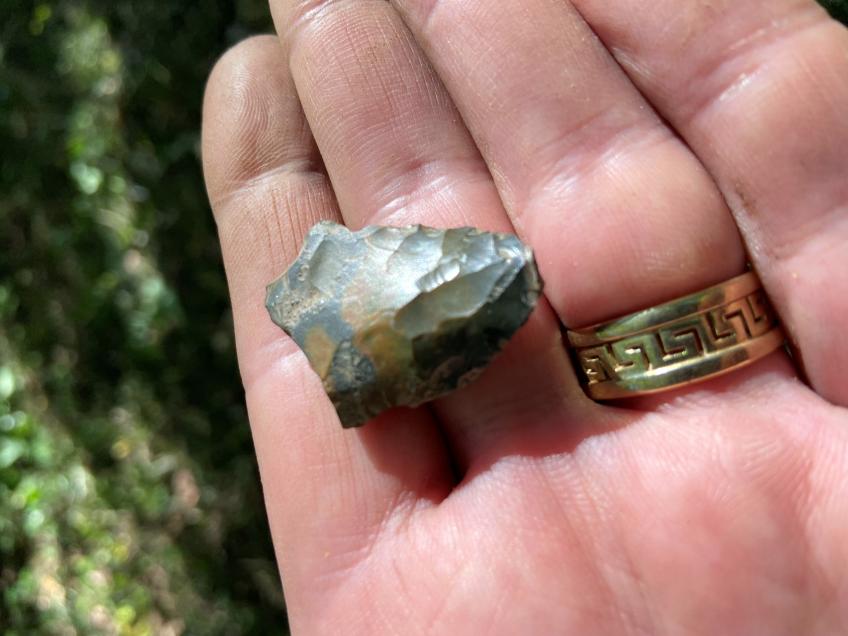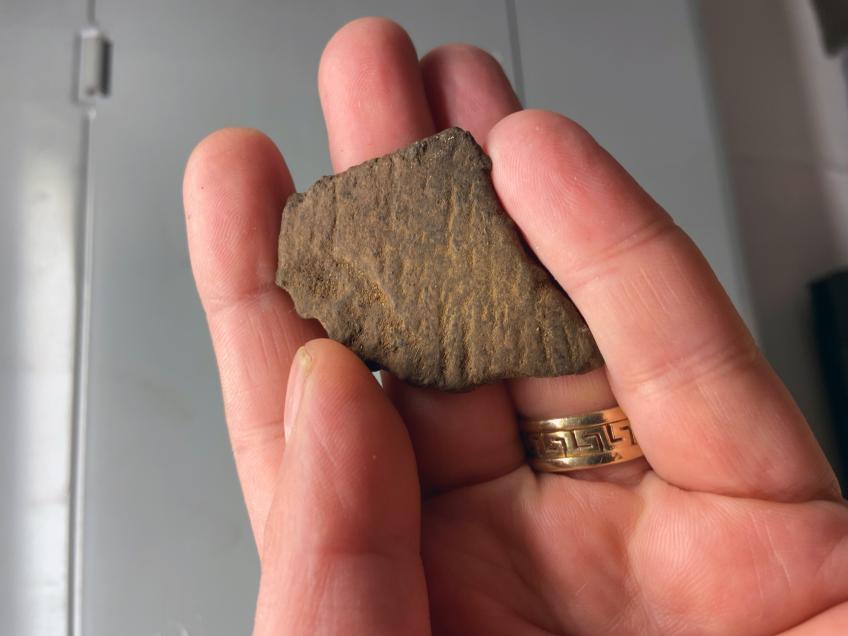Archaeology investigations tell of prehistoric life in Chicago area
ILLINOIS — Pieces of ancient materials that might not have seen the light of day in a thousand years or more were identified at Midewin National Tallgrass Prairie in October during archaeology investigations that are underway through an Organic Act permit.
The project’s principal investigators are William “Bill” Parkinson, curator at the Field Museum of Natural History in Chicago and professor at the University of Illinois at Chicago, and UIC professor Mitch Hendrickson. They are leading a team of students and staff from UIC and the Field Museum in investigations consisting of sinking shovel tests — basically, digging holes — and scraping the surface of features to validate and define individual feature boundaries. The investigations do not require significant ground disturbance and excavation units will not be opened.
Pieces of prehistoric ceramics were identified on Oct. 22, during the first week of the project. They are indicators of a vibrant native community that was once active here, 50 miles from Chicago, in a creekside forest that is now thick with honey locust and black walnut trees.
“The goal of the project is to model human-landscape interactions in the Chicagoland metropolitan area throughout the Holocene era,” said John “Jamie” Kelly, head of Anthropology Collections and an anthropology collections manager with the Field Museum. “We want to research changes in local land use through thousands of years. It is important because native peoples have lived in the area through environmental changes that would have affected the resources that are available, and cultural changes may show how they modified their strategies for living on and with that land.”
The USDA Forest Service issued an Organic Act permit in summer 2021 for relocating a site identified in the mid-1980s, when Northwestern University archaeologists were commissioned to survey several hundred acres around the Joliet Army Ammunition Plant — where Midewin National Tallgrass Prairie was later established — in response to proposed land use changes. The material they identified at that time suggested pre-European Native American presence spanning thousands of years. In their report, the archaeologists described the site as a “highly significant cultural resource” with “deep deposits of lithic and ceramic material at high density in a well-preserved context.”
“Based on the archaeological materials collected during the initial survey, the site seems to have been occupied shortly after A.D. 1,000 during the time when local hunting and gathering groups were experimenting with horticulture and settling down into more permanent villages,” Parkinson said.
The Forest Service hopes to utilize data from the project to inform and refine strategies to advance the objectives of the Illinois Land Conservation Act, which established Midewin National Tallgrass Prairie in 1996. Key priorities include restoration of natural tallgrass prairie and protection of important cultural and historical resources.
“The research we propose will help us build a micro-regional narrative about how native groups interacted with this landscape as they converted from mobile hunters and gatherers to sedentary farmers,” Hendrickson said. “This is the first step in building a longer narrative about human-landscape interaction in the region.”
The project team will resume investigations at Midewin National Tallgrass Prairie in spring 2022 and will continue to assess potential for a long-term multidisciplinary research project.



